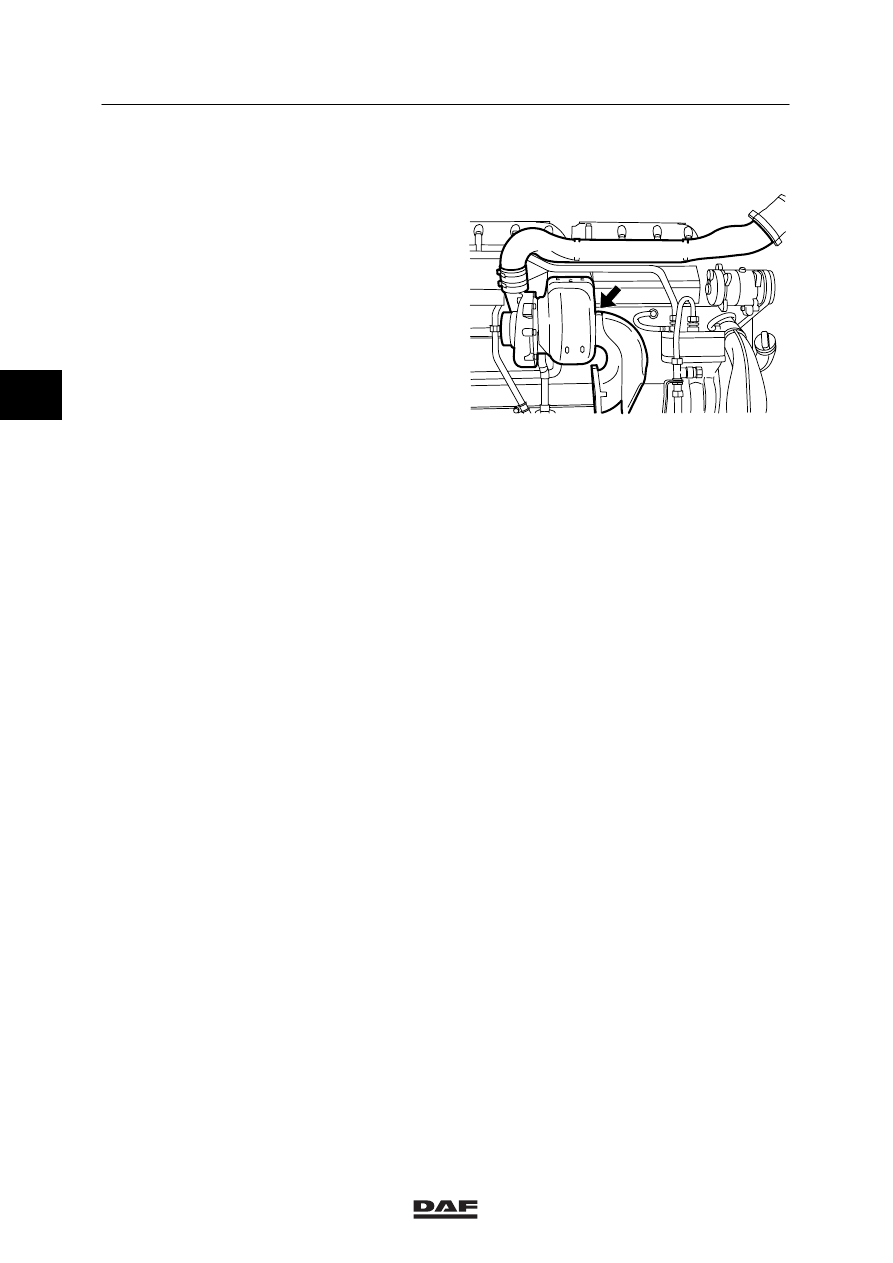DAF 95XF. Manual - part 399

4
XF ENGINE INLET AND EXHAUST SYSTEM
Inspection and adjustment
95
XF series
3-2
3.2
INSPECTION OF EXHAUST BACK PRESSURE
Inspecting the exhaust back pressure
1.
Remove the plug from the exhaust bend
and install a suitable coupling with a pipe.
The first part of the pipe must be made of
metal, to withstand the high temperatures.
2.
Note:
Use an attenuated gauge to prevent
excessive shaking of the gauge needle.
Connect a pressure gauge to the pipe,
with a range of at least 0.1 - 0.2 bar
(10 - 20 kPa).
3.
Note:
The engine brake must not be used during
measurements.
This is done to protect the pressure gauge.
Measure the exhaust back pressure at the
maximum loaded engine speed and
compare the measurement result with the
specified value. See main group “Technical
data”.
i 400180
3
©
0008